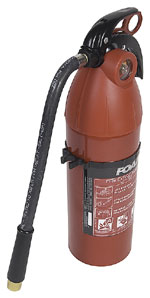A request for help can occur at ANY hour on ANY day. Volunteers and Professional’s are always on-call to help you and your family in an emergency situation. In many cases, the first help to your rescue might be a volunteer that lives nearby your home or residence.
Please ask yourself the following questions to allow the best possible response time to your residence or business if emergency service’s were requested.
1. Are my Street Address Numbers properly displayed on my Mailbox, Property Entrance and on the front of my Home?
2.Are the Address Numbers LARGE ENOUGH (3-4 inches), REFLECTIVE, and VISIBLE from each possible road direction leading to my mailbox/driveway? Can they be read clearly at NIGHT? In RAINY WEATHER? At 2 a.m. in a rain or snow storm?
3. Can Fire Department, Ambulance, and Sheriff Department personnel access my private gate to enter my property in an emergency situation? Is a Key or Pass code required?
4. Is there enough room on my driveway and around your home/business to permit mulitple large emergency vehicles / equipment in the event of a Fire or Medical Emergency?
Do you have some questions of your own to be more prepared should emergency services be needed? Contact us at 501-821-9320 or email wpfd@sbcglobal.net to get your answers!
Fire Extinguisher Info-
Fire extinguishers are divided into four categories, based on different types of fires. Each fire extinguisher also has a numerical rating that serves as a guide for the amount of fire the extinguisher can handle. The higher the number, the more fire-fighting power. The following is a quick guide to help choose the right type of extinguisher.
 |
|
More info available from http://www.fire-extinguisher101.com/
Contact WPFD for information on how you can become more prepared in case of fire, medical emergency, or natural disaster. WPFD’s Business Office Telephone is 501-821-9320 (leave a message) or contact us by email : wpfd@sbcglobal.net
Checkout informative Fact Sheets on the links below from our friends at NFPA (National Fire Protection Association)
Removing Barriers For Fire Escape
Reproduced from NFPA’s Web site, © NFPA (2009).
